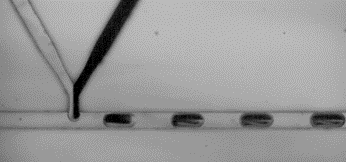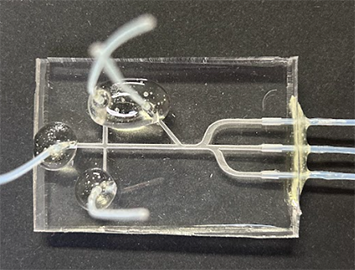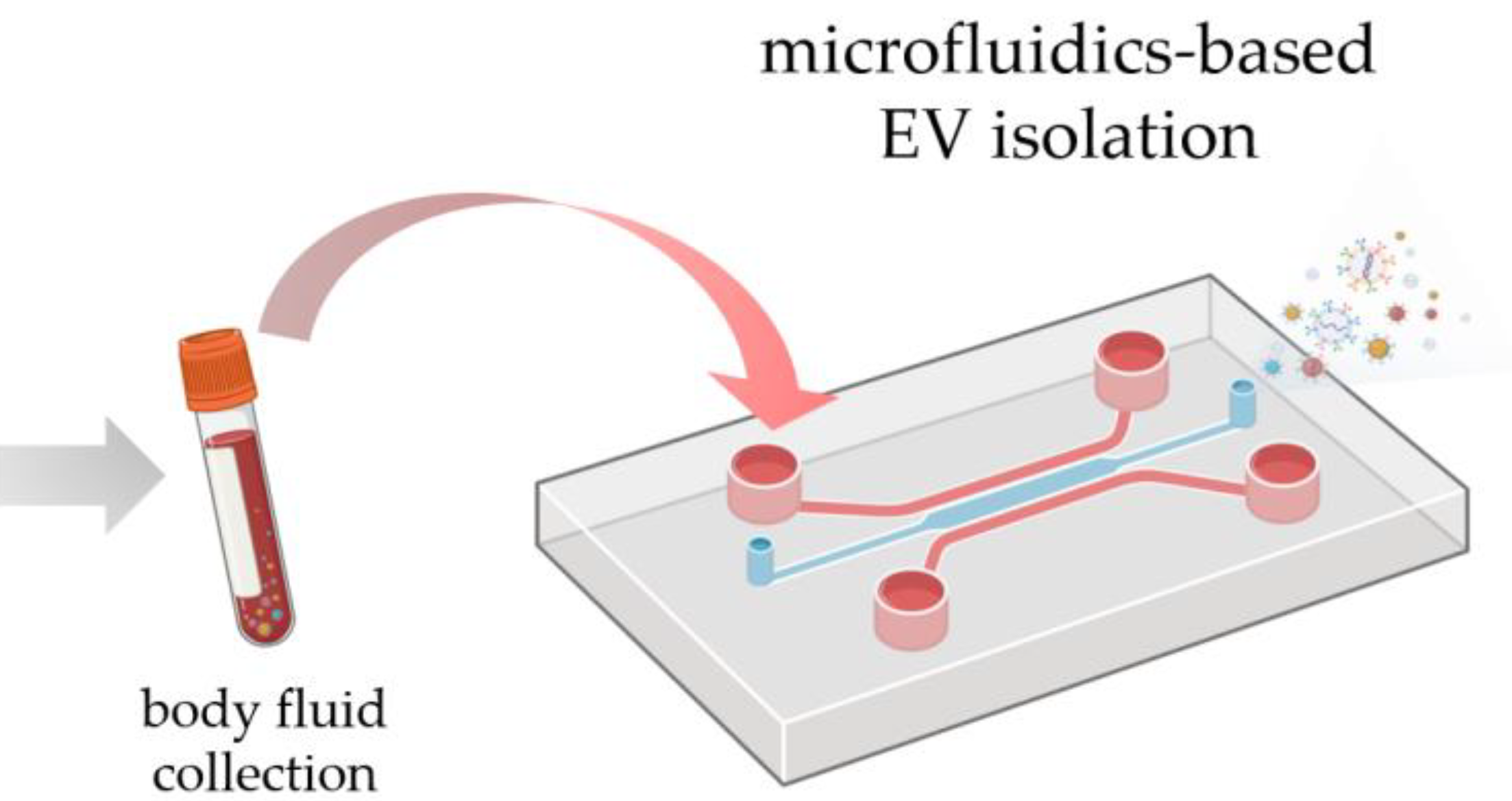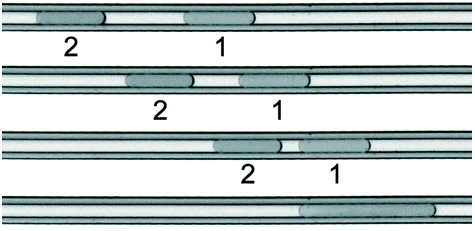 Microfluidics is the science of systems that manipulate small amounts of fluids (between uL and fL), using channels with dimensions of tens to hundreds of microns. The reduced physical dimensions lead to laminar flows, guaranteeing optimum control of the flow properties and high reproducibility. Droplet microfluidics relies on the production of droplets with controlled size, where each droplet can be considered a small and independent reactor flowing in an immiscible liquid. Notably, droplet microfluidics is a rapidly growing interdisciplinary field of research combining soft matter physics, biochemistry and microsystems engineering. In our group, the activities in this area follow two main themes: dynamics of droplets in confined systems, and microfluidic devices for extracellular vesicles isolation and analysis.
Microfluidics is the science of systems that manipulate small amounts of fluids (between uL and fL), using channels with dimensions of tens to hundreds of microns. The reduced physical dimensions lead to laminar flows, guaranteeing optimum control of the flow properties and high reproducibility. Droplet microfluidics relies on the production of droplets with controlled size, where each droplet can be considered a small and independent reactor flowing in an immiscible liquid. Notably, droplet microfluidics is a rapidly growing interdisciplinary field of research combining soft matter physics, biochemistry and microsystems engineering. In our group, the activities in this area follow two main themes: dynamics of droplets in confined systems, and microfluidic devices for extracellular vesicles isolation and analysis.
Microfabrication
 We produce microfluidic devices exploiting various microfabrication techniques, including photo- and soft-lithography, micromilling, 3D printing. These devices are used for various applications including fundamental studied, chemical sensing and biomedical analysis. We performed numerical simulation by Comsol Multiphysics.
We produce microfluidic devices exploiting various microfabrication techniques, including photo- and soft-lithography, micromilling, 3D printing. These devices are used for various applications including fundamental studied, chemical sensing and biomedical analysis. We performed numerical simulation by Comsol Multiphysics.
Droplet for EV isolation

Extracellular vesicles (EVs) are promising disease biomarkers, but clinical use is limited by inefficient isolation. In our lab, we develop droplet microfluidic platforms to enable rapid, efficient EV separation, improving their applicability in diagnostics and biomedical research. Two PRIN-MIUR project are currently founded on this topic (EXTREME, OCEAN)
Droplet dynamics

Motion, recirculation and organization of droplets in microchannel depends on many parameters, including the film thickness surrounding the droplets, surface tension, presence of surfactants, channel roughness, etc. In the laboratory we study how these physical-chemistry aspects influence the droplet dynamics.
